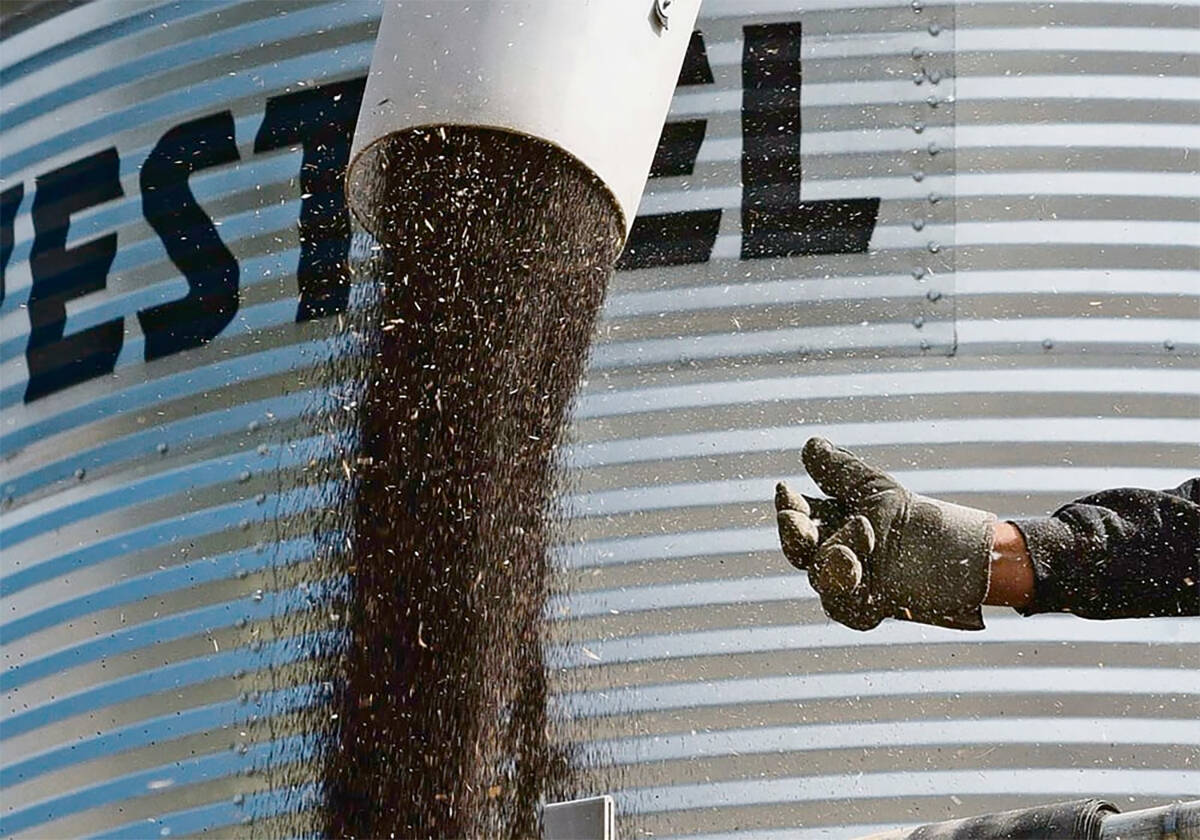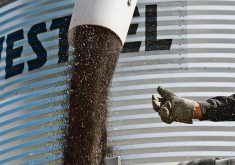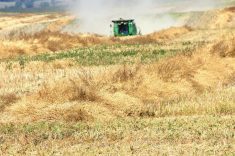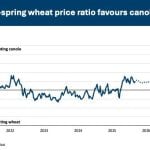Cattle turn their shaggy hinds to the prairie winter’s blast and return to munching on straw. It is the only food they have to eat, yet not only do the animals survive the winter, they gain weight.
Seem far-fetched?
A scientist from Michigan State University (MSU) says straw may be the answer to high ruminant feeding costs.
Straw contains the sugars and proteins necessary to sustain life, but those components are tied up in tough-to-digest fibre.
Over the years, various techniques have been tried to access the sugars locked in straw, including fine chopping and treating the straw with ammonia.
Read Also

Farmers urged to be grain-safe this fall
Working around grain bins comes with risk, from farmers falling to drowning in grain: Experts have five tips to help avoid grain-related accidents this harvest.
Chopping is expensive and treating stacks of chopped straw and chaff with ammonia is expensive and time consuming. It also is bad for the environment, as nearly all the ammonia is lost to the atmosphere.
Other attempts at creating an ammonia treatment process for waste fibre failed because high levels of toxic amino acids built up in the treated material and ultimately in the cattle that ate the product.
Bruce Dale, of MSU, said the process he and colleagues patented increases the nutritional value of straw by 300 to 600 percent and leaves little ammonia residue in the resulting feed.
He calls the process Fibex. Using an extruder, an auger-type screw that compresses the straw, and infusing the compressed material with liquid ammonia at 70 to 90 C, Dale can break down the fibres in about five minutes, exposing all digestible material.
When fed into the reactor, the extruder and ammonia recovery device, the ammonia, which is attracted to water, seeks out water inside plant fibres.
An explosion erupts when the ammonia, having been suddenly released to atmospheric pressure, escapes from the plant tissues. The fibres are blown apart.
Separate the good and bad
Ammonia is sent into a water bath for recovery and the feed is released for cooling in a large tumbler.
Once dry, the feed is nutritious and stable, according to Dale.
He sees the process becoming popular in areas such as California where burning of rice straw in the Central Valley region will soon be banned.
“We have worked out the economics of the process and a 500 tonne (per day) plant is highly viable and no new technology that isn’t already available would be needed to build the facility,” said Dale.
A plant of this size would only lose about three kilograms of ammonia daily.
He said tests will continue with beef cattle but he believes the process is ready for commercial use.
“Not only will it improve low quality feeds but it can be used on high quality stuff too. Alfalfa improves by five to 10 percent when pro-cessed this way.”
Dale also hopes his research will receive more funding from United States Senate bill number 935, yet to be passed.
The bill focuses on stabilizing U.S. fuel supplies. The Fibex process can improve straw for use in making alcohol.
“It’s too expensive right now for producing alcohol but in the future it may have a role to play there too. For right now it is a cost-effective way to turn field trash into high quality feed.”
Dale and his colleagues are seeking companies interested in developing their work.














